For newcomers in the field of photocatalysis, experiments often come with various challenges. Fortunately, at Perfectlight Technology, you can always find comprehensive and thoughtful answers to these problems.
For example, as mentioned in the article title: the issue of selecting a light source for photocatalysis experiments. The following text provides a detailed analysis:
Addressing different research needs, the focus here is on Perfectlight Technology's 9 types of light source devices, which will help you understand how to choose a light source for your specific research requirements.
There are many criteria for choosing a light source, and one important point is to confirm the absorption band edge of the prepared material, which is the spectral characteristic of the light source.
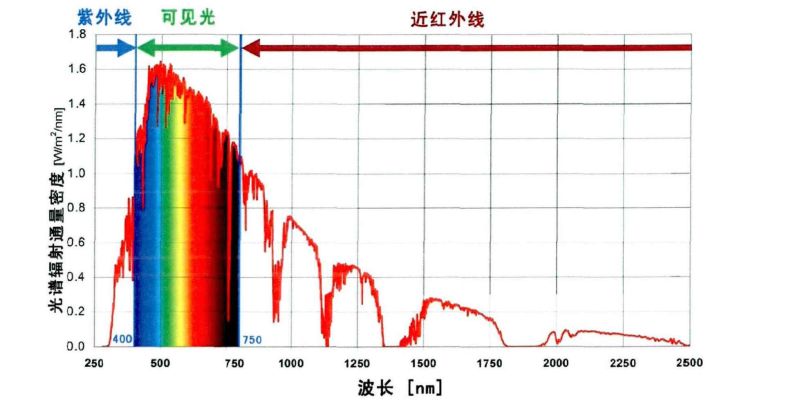
Solar Spectrum Distribution [1]
Each material has a different absorption band edge. For materials like TiO2, ZnO, etc., with absorption band edges in the range of 300-400 nm, you can choose UV-enhanced light sources like PLS-SXE 300UV, PLS-SXE 300DUV xenon arc lamps;
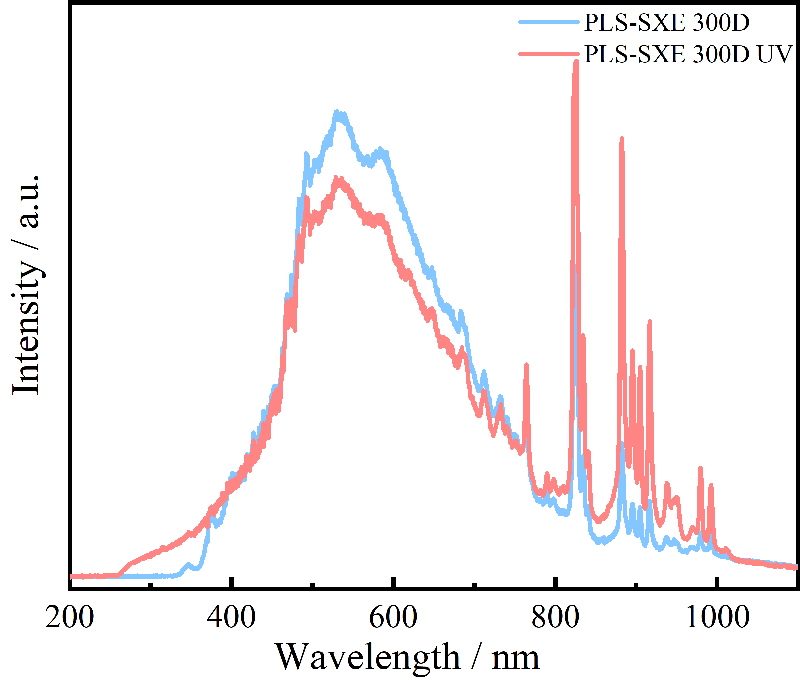
UV Enhanced Spectra
For photocatalysts with absorption band edges in the range of 400-800 nm, such as CdS, g-C3N4, BiVO4, etc., you can choose PLS-SXE 300, PLS-SXE 300D, Microsolar 300, CHF-XM series xenon arc lamps with filters or PLS-LED 100C high-power LED light sources.
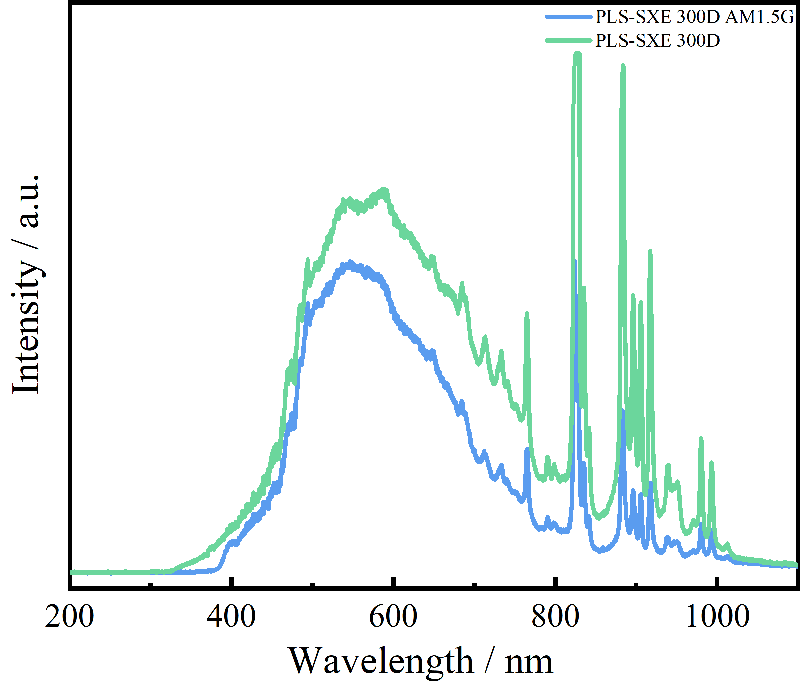
PLS-SXE 300D with AM1.5G filter spectral chart
Additionally, you can choose according to your experimental scenario:
1. For photochemical experiments such as photocatalytic water splitting for hydrogen/oxygen production, CO2 reduction, photodegradation, desalination of seawater, photothermal experiments, organic synthesis, etc., you can choose light sources like:
PLS-SXE 300/300UV Xenon Arc Lamp
PLS-SXE 300D/300DUV Xenon Arc Lamp
Microsolar 300 Xenon Arc Lamp
2. For photoelectrochemical experiments, you can choose light sources like:
PLS-FX 300HU High Uniformity Xenon Arc Lamp
PLS-LD Laser Diode Light Source
PLS-LED 100C High-Power LED Light Source
CHF-XM Series Xenon Arc Lamp
3. For quantum yield testing, you can choose light sources like:
PLS-AL 150/300 Wavelength-Continuously-Tunable Light Source
PLS-EM 150 Continuously-Tunable High-Intensity Light Source
PLS-LED 100C High-Power LED Light Source
PLS-LD Laser Diode Light Source
Or use them in combination with 300 series xenon arc lamps and filters.
PLS-SXE 300/300UV Xenon Arc Lamp
PLS-SXE 300D/300DUV Xenon Arc Lamp
Microsolar 300 Xenon Arc Lamp
Note: Filters have a relatively large half-bandwidth, which may introduce significant errors in quantum efficiency experiments, so they are not recommended.
4. For solar cell testing, you can choose light sources like:
PLS-FX 300HU High Uniformity Xenon Arc Lamp
CHF-XM Series Xenon Arc Lamp
Of course, when choosing a light source, selection criteria are essential. The following factors are also critical:
1. Illuminance
The number of effective photons per unit volume is a direct factor affecting reaction rate. Higher illuminance results in more incident photons per unit volume, leading to more active species generated on the catalyst surface and faster reactions. However, low illuminance can prolong reaction times and increase byproducts. It's important to consider this factor and choose a suitable light source for your experiments.
2. Light Source Stability
High light source stability means that the light source equipment's luminous power can remain stable for an extended period, ensuring the consistent output of light energy. This is crucial for smooth experimental operation and experiment reproducibility.
3. Uniformity of Light Spot
The uniformity of the light spot can affect the accuracy of experimental results. For photoelectrochemical experiments, non-uniform light sources can cause two issues: first, inconsistent light intensity leads to different carrier concentrations at different positions on the photoelectrode, affecting carrier flow; second, when replacing the photoelectrode for experiments, it's challenging to achieve complete consistency in the light received, affecting experiment repeatability and accuracy.
To provide a clear understanding of the characteristics of these 9 types of light source devices, the following table will assist:
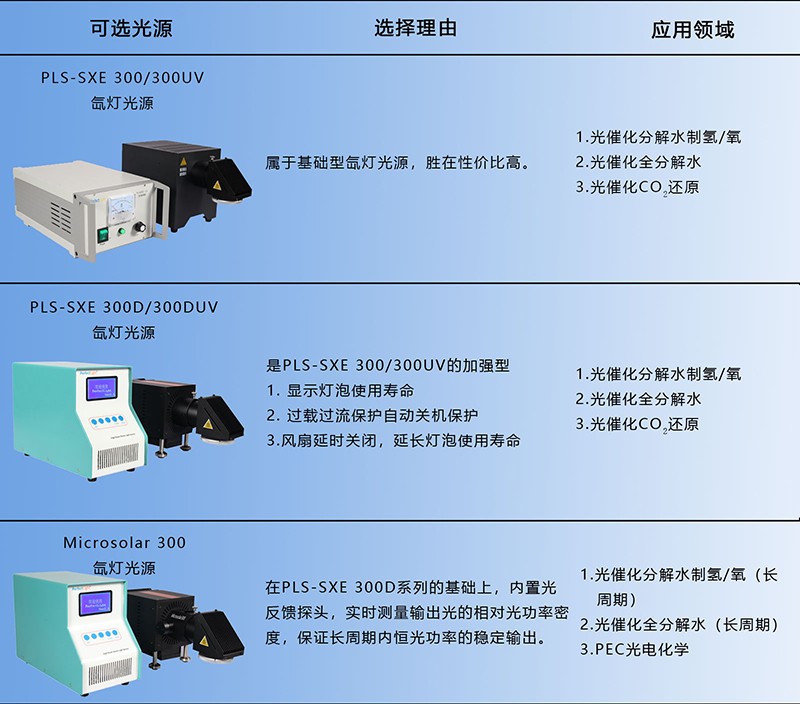
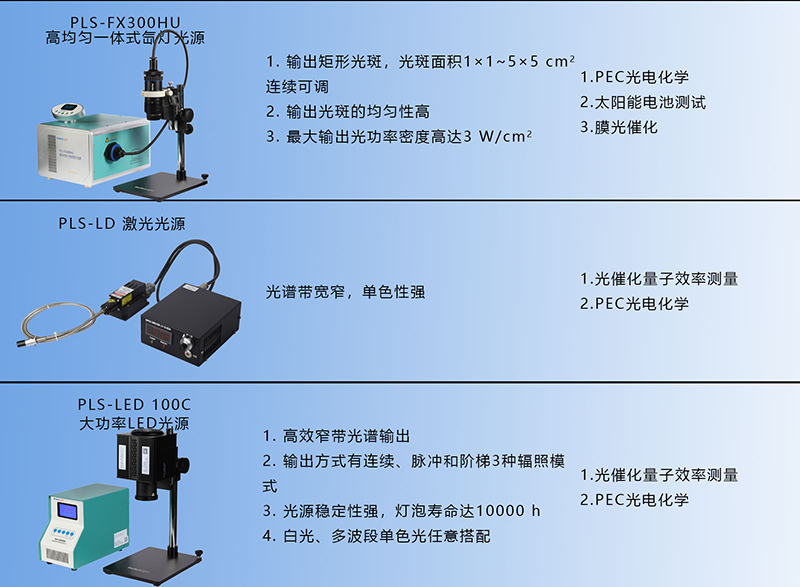
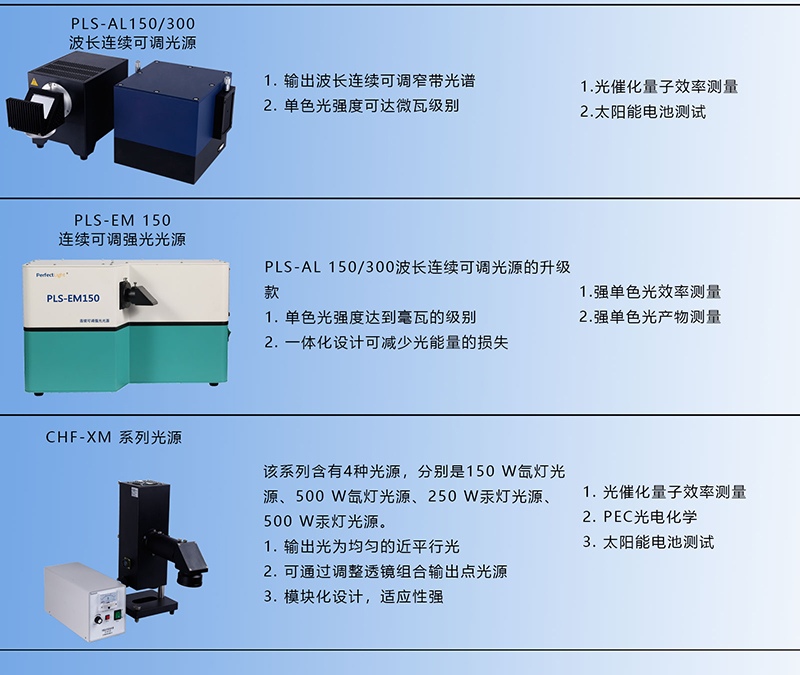
After reading the above content, do you have a more comprehensive understanding of the selection of laboratory xenon arc light sources? Have you found the product you desire among the nine introduced above? Although the article does not provide more data-related presentations of light source products, if you need further information, please feel free to call 400-1161-365 for inquiries.